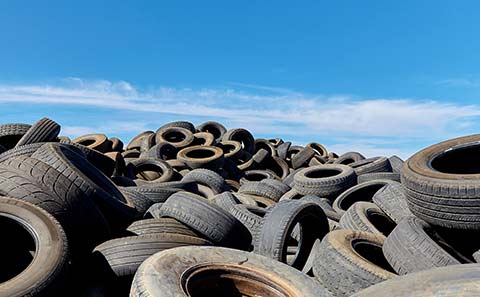One might think that flotation tires are only those wide tractor tires you see working on the field. Well, this statement is not completely true.
Yes, floating tractor tires are more widely known to be flotational models. They need to toil soil without damaging its crop-growing ability. However, off-roading light trucks can also benefit from the qualities provided by such tires.
But, exactly what is flotation? Why is it important?
Keep reading and find out everything you need to know about these tires!
An Introduction to Flotation Tires
What are flotation tires? – you might ask. It sounds absurd. A floating tire? No way!
But yes, flotation tires exist. In fact, they are quite a neat invention helping off-roading enthusiasts and agricultural workers alike. No matter if we are talking about tractor flotation tires or ones for trucks, they operate on the same principle.
Flotation tires for sale are basically a different format of tire sizing.
Aside from their wide footprint, flotation tires for trucks, ATVs, golf carts, tractors, etc. also feature an optimized construction. This combination allows them to perform well on soft and loose surfaces, without loss of traction on deeper terrains. Essentially, this is the flotation definition when it comes to tires.
You can also find these models as “standard size tires”.

How Does a Flotation Tire Differ from a Metric Tire?
While flotation tires for ATV and other smaller vehicle applications are significantly distinct compared to metric tires, truck flotation tires can be mistaken for metric ones.
So, if they are so alike, what’s the big deal with high flotation tires?
The first thing you will notice is the format used for the tire size. Instead of the usual metric size, which is measured in millimeters (only the rim diameter is in inches). A high flotation tire size consists of the total tire diameter (height), width, and rim diameter.
For example, a popular standard tire size is 33×12.50R15. Compared to this metric tire size is different – 315/70R15.
Secondly, their internal structure is different. Whether you get a radial or bias-ply flotation tire set, it will still perform better on loose terrains. These tires are optimized to conquer such surfaces without losing their grip or sinking into the terrain.
Their wider footprint and ideal structure make sure the tire is able to “float” over the terrain, without disturbing the surface. This is especially important for AG flotation tires, where excessive traction causes soil retention, damaging soil quality.
This is How You Read Flotation Tire Sizes
Reading the tire size of flotational tires for semi trucks and other vehicles is different from metric sizes. However, it is not nuclear science. Flotation sizes simply take different measurements into account.
Let us walk you through what each section of the flotation tire size stands for.
We will take the size 33×12.50R17LT 114Q as an example.

- Tire Diameter – The first number (33) is the overall height of the tire.
- Tire Width – The second number (12.50) shows the tire width from one sidewall to the other.
- Construction – Flotation tires can come with radial or diagonal bias structures. Depending on its construction type, flotation tires will have the letters R (radial) or D (diagonal) after the first two numbers. Our example has a radial structure.
- Rim Diameter – The last number (17) indicates the rim diameter the tire needs to be fitted on.
In addition to the above-mentioned numbers, flotation tires also feature a speed and load index. These indicate their load and speed capacity, much like with metric tire sizes.
The P-Metric Equivalent of Flotation Tires
They might seem like two different worlds, but metric to standard tire conversion is possible.
While you most likely will not convert a farm or agriculture tractor tire to a passenger tire size, knowing which metric sizes fit your truck can be useful. Large tire sets are available in comparable tire sizes.
Flotation to Metric Tire Size Conversion
We do not have a metric tire converter available on our website. But, we hope that this Flotation Tire Conversion Chart will help you out:

It features the most common metric tire conversion sizes.
Frequently Asked Questions
Do Tires Float?
When tires “float” it means that they are able to safely perform on loose and soft terrain surfaces. Think about AG tires that perform on fields, without damaging the soil quality or getting stuck on the terrain. If we look at it in this manner then yes, tires float.
What Is a Flotation Tire?
Flotation tires are a different tire sizing form. However, these tires also feature an optimized construction and tread pattern. As a result, they are able to offer better soft surface performance. Essentially, these tires “float” over the surface, without sinking into it and losing traction.


